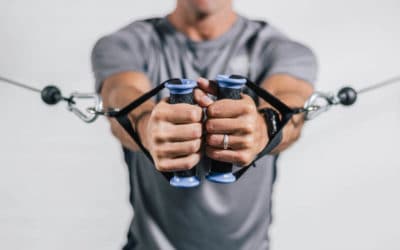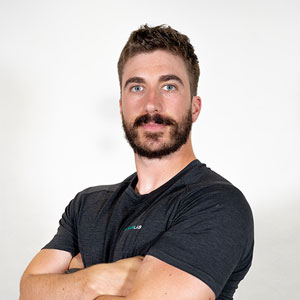So, you’ve just finished a great workout. You saunter out of the gym, feeling invincible – until you wake up the next morning, that is, and everything hurts. Cue your colleagues looking on in bemusement as you gingerly tiptoe down the stairs, grumbling about yesterday’s squats.
Sound familiar? You’re not alone. DOMS – short for Delayed Onset Muscle Soreness – is a common phenomenon, especially when you start a new fitness programme or ramp up the intensity of your training.
What is DOMS?
It’s characterised by muscle soreness and tightness that typically develops roughly 6 to 8 hours after a challenging workout, peaking 48 to 72 hours later. The dull muscular ache is often accompanied by stiffness, a short-term loss in muscle strength and localised tenderness.
What causes DOMS?
Although the exact science behind DOMS isn’t yet crystal clear, scientists are generally agreed that this post-workout pain is caused by tiny microscopic tears in muscle fibres that occur in the eccentric portion of an exercise.
There are three types of muscle contraction:
- Eccentric: the part of a movement where your muscle contracts and lengthens. For example, lowering the weight when performing a bicep curl. Another less obvious example would be the contraction of the quadriceps when walking or running on a downwards incline
- Concentric: the part of a movement where the muscle contracts and shortens. For example, lifting the weight up when doing a bicep curl
- Isometric: here, the muscle is activated, but is held at a constant length instead of lengthening or shortening. Holding a weight out in front of you, keeping the arms at shoulder height, for example, would cause the biceps to contract isometrically
Diving into this a little deeper, scientists have demonstrated that eccentric movements are primarily responsible for DOMS, by comparing the level of soreness felt by individuals training solely with eccentric, concentric and isometric actions. It has been consistently shown that those who exclusively carry out eccentric actions in their training experience extreme muscle soreness, whilst those who train using only concentric and static movements experience little soreness.
How can I reduce DOMS?
If you’re venturing into a new fitness programme or looking to up the intensity of your training, then try to progress slowly – this is the single best way to decrease the likelihood of experiencing severe DOMS. This may mean incorporating a prep phase into your program with a week or two of reduced volume, which will allow your muscles to adjust to the new demands being placed on them.
Although stretching both before and after any workout is incredibly important, unfortunately there is not yet any hard evidence to suggest that it will help to prevent or alleviate DOMS. One thing you can try, however, is foam-rolling. Although it doesn’t work for everyone, some studies have shown that it can enhance recovery and alleviate muscle soreness in some people.
You might be tempted to reach for some ibuprofen to alleviate your symptoms – but we’d recommend holding off. Although DOMS isn’t pleasant, it is unfortunately part of the muscle growth process, so if you’re challenging yourself on a regular basis, you’re likely to experience some degree of DOMS afterwards. Save painkillers for when you really need them and try to recognise that the soreness you feel after a great workout is simply your body recovering and growing.
No pain, no gain… Right?
While some of us might be alarmed by pain the day after a workout and resolve to go easier next time, others will wear it as a badge of honour, seeing it as proof that they have worked hard. But should soreness really be used as a marker for a good workout? Probably not. Instead, to make sure that your training is effective, we would recommend listing your goals and keeping track of your progress to make sure that you are improving over time and getting closer to achieving them. Our trainers will work closely with you to help you reach your goals – whether that be losing weight, building strength and endurance or improving your overall fitness. And what’s more, we’ll make sure that you have fun doing it!

